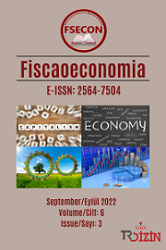Time Path of Capital-Labor Ratio and Steady-State Conditions of the Solow Long-Run Growth Model
Time Path of Capital-Labor Ratio and Steady-State Conditions of the Solow Long-Run Growth Model
Author(s): Ata ÖzkayaSubject(s): Economic history, Labor relations, Economic policy, Economic development
Published by: Ahmet Arif Eren
Keywords: Economic Growth; Constant Elasticity of Substitution; Production Function; Dynamical Equilibrium; Capital Accumulation; Steady-State Growth Rate;
Summary/Abstract: This paper proposes a general solution to Solow’s original differential equation explaining the rate of change of capital-labor ratio. Determining the time path of capital-labor ratio, we obtain novel general conditions under which the capital-labor ratio can reach a stable steady-state value. Identifying steady-state conditions, this study obtains exact time period when the economy can reach its stable steady-state capital per labor magnitude. The findings of the study stay at the crossroads of new generation endogenous growth models, propose implications for factor-eliminating technical change and consider the effect of automation on economic growth. Our results state some policy implications that can be outlined as follows. First, in economies where elasticity of substitution between capital and labor is lower than unity, the economic policies addressing productivity growth should be different than those implemented in economies where elasticity is greater than unity. Second, the main source of uncertainty for policy makers is inability to determine exactly when the economic activity would reach a stable steady-state path. Our findings aim to shed light on this uncertainty.
Journal: Fiscaoeconomia
- Issue Year: 6/2022
- Issue No: 3
- Page Range: 1266-1281
- Page Count: 16
- Language: English

